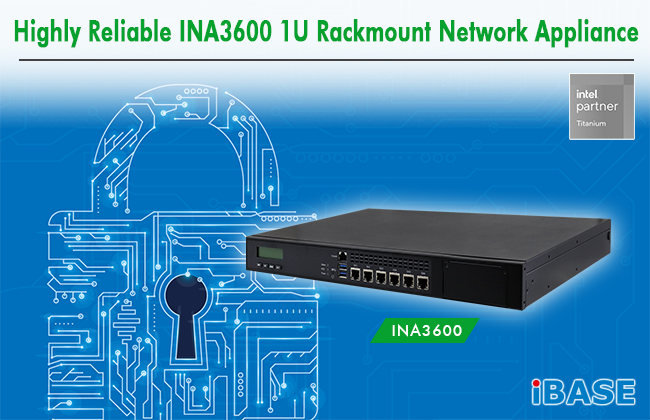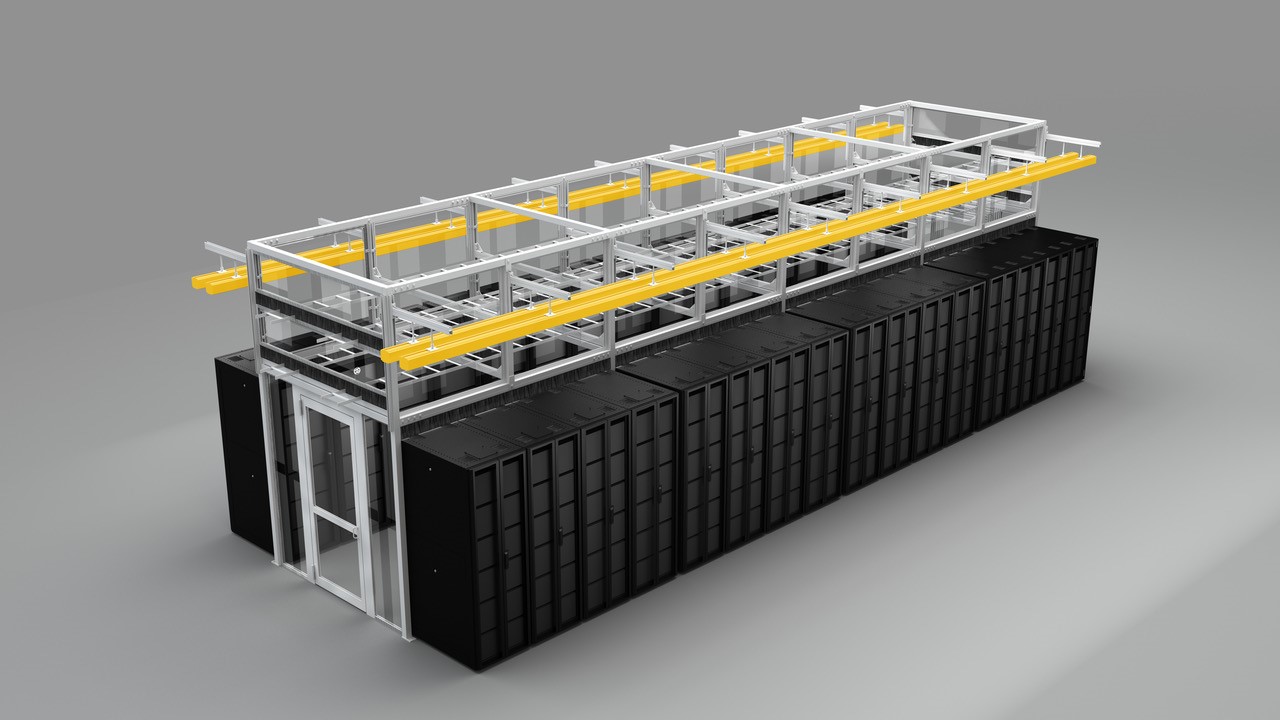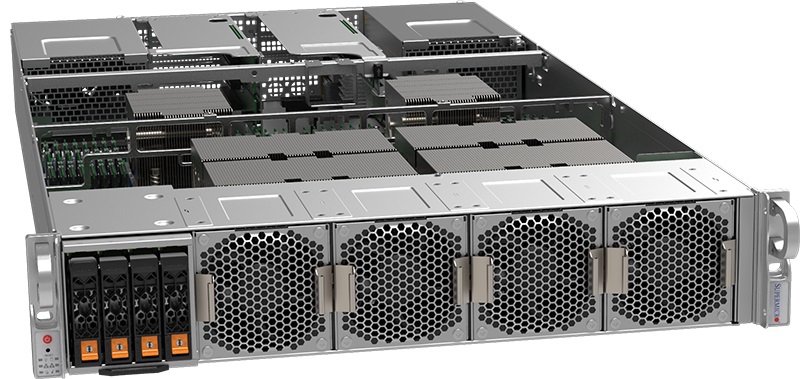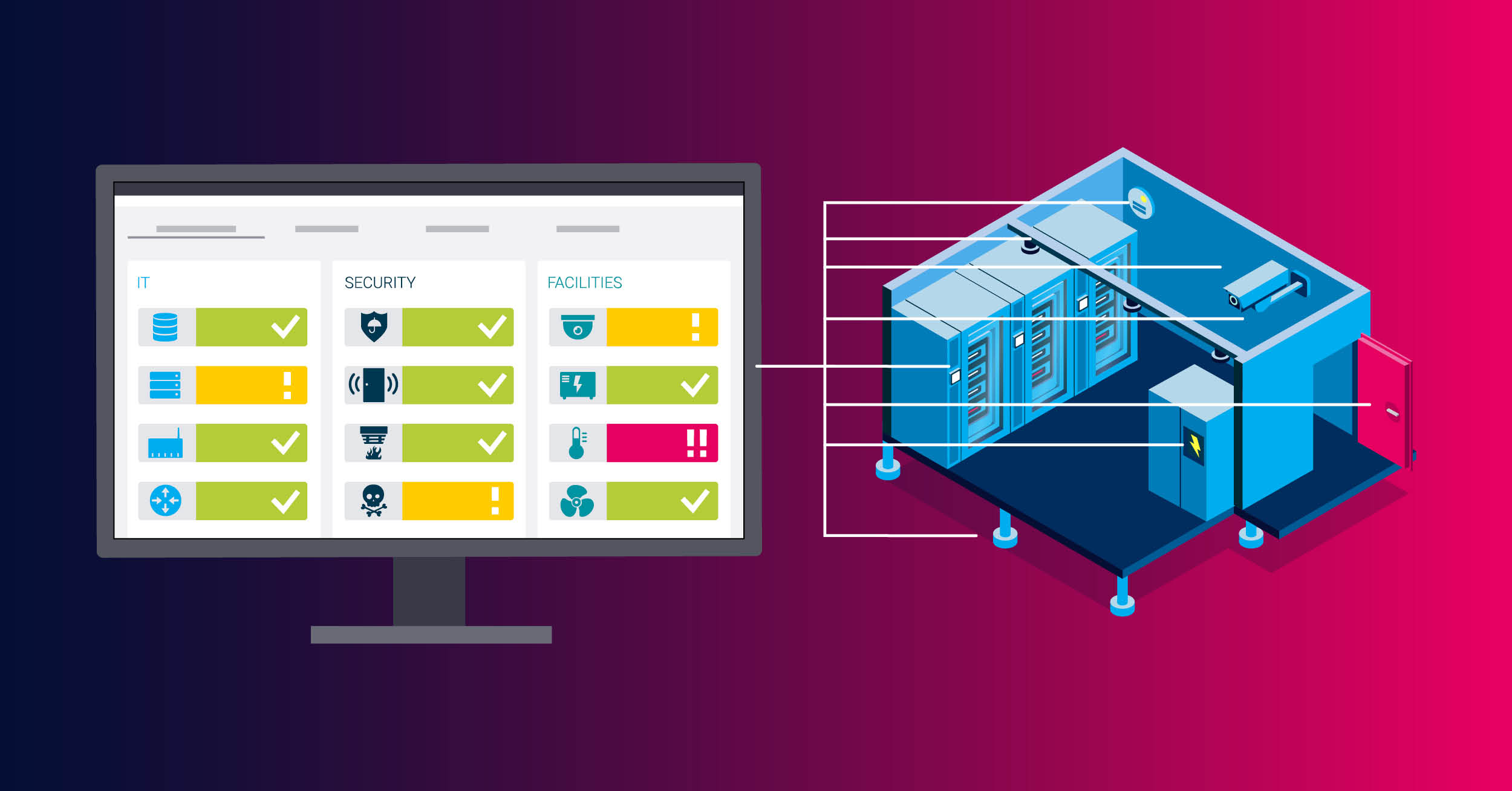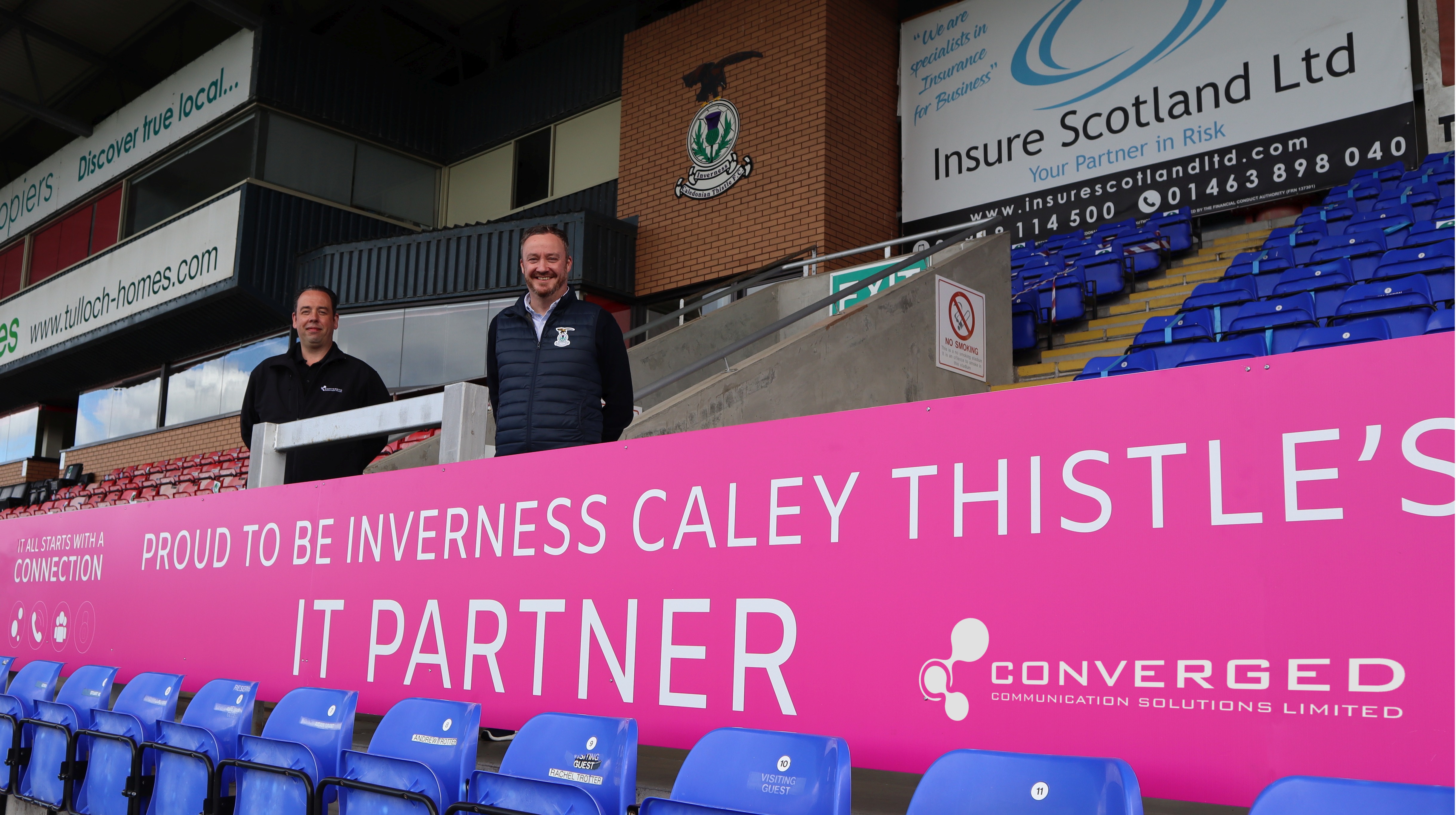Scalable Network Attached Solutions for Modern Infrastructure
Enterprise Network Infrastructure: Design, Performance & Security
Scalable Network Attached Solutions for Modern Infrastructure
Highly Reliable INA3600 1U Rackmount Network Appliance
IBASE Technology has introduced its new INA3600, a highly reliable 1U rackmount network appliance, designed to handle complex and demanding networking tasks for both large and growing businesses. It delivers powerful networking performance optimized for high-density deployments in applications such as network security, SDN, NFV, SD-WAN, data management and analytics.
The INA3600 high performance 1U-sized appliances are powered by 10th Gen Intel Core and Xeon W processors (codenamed Comet Lake) and supports up to 14 Gigabit Ethernet ports with IBASE proprietary network interface cards. To meet your network deployment and expansion requirements, the flexible INA3600 comes with six GbE ports and in two variants. The INA3600W model supports an Intel W480E chipset, up to 14 LAN ports and a PCI-Ex16 expansion slot, while the INA3600H has an Intel H420E chipset and the option to have a maximum of 10 LAN ports.
The INA3600 supports two DDR4 memory slots for a total capacity of 64GB. Depending on SKU, it integrates three 2.5in drive bays for high-speed storage and a liquid crystal display module (LCM). A 300W power supply, LAN bypass function (LAN3/4 & 5/6), TPM 2.0 hardware-based security and two USB 3.0 ports are standards.
INA3600 Features:
10th Gen Intel Xeon W / Core i9/i7/i5/i3 / Pentium Gold / Celeron processor with W480E or H420E PCH (CML-S)2x DDR4 UDIMMs, Max. 64GB (ECC/ Non-ECC)6x RJ45 GbE on boardOptional NIC slot1x PCI-E x8 Expansion slot300W power supply
Beatrice - 27 January 2022
Data
News
Scalable Network Attached Solutions for Modern Infrastructure
IT Leaders Select Druva as Best SaaS Platform for Data Resiliency
Druva has announced that it has once again been recognized for its outstanding at-scale data resiliency capabilities and exceptional customer experience. Druva was selected as the Best Software-as-a-Service (SaaS) Provider in the 2021 Computing Technology Product Awards, while the Druva Data Resiliency Cloud’s leading experience and platform received 12 honors in G2’s Winter Reports 2022, including being named a leader in Enterprise SaaS Backup Software. Together, these awards are the latest recognition for Druva’s multi-tenant SaaS platform delivering comprehensive data, cyber and operational resilience for thousands of organizations.
“With data becoming more fragmented, regulated and exposed to cyber risks by the day, businesses are increasingly in need of a new approach that is grounded in trust, innovation and simplicity,” says Ash Parikh, Chief Marketing Officer, Druva. “These awards are a testament to Druva’s ability to deliver an enterprise scale SaaS platform that seamlessly meets many of today’s needs, and we look forward to driving even more impact and customer value this year.”
Computing Technology Product Awards
The Computing Technology Product Awards
recognize the best of the technology industry, from the most innovative and
compelling products and vendors, to the most successful end-user projects. With
the continued adoption of cloud, the SaaS category highlights the importance of
the high levels of integration that businesses need for success. Winners were
selected independently by Computing’s community of IT leaders and business
professionals.
G2 Winter Reports
“Every quarter G2 recognizes the top-rated solutions in the industry based on data informed by real-world customer experiences,” comments Patrick Szakiel, Manager, Market Research, G2. “These awards are designed to help millions of business professionals make the best decision possible for their organization, and Druva has once again demonstrated the capabilities of its cloud-native solution, as well as its ability to deliver exceptional support to customers.”
G2’s Winter Reports 2022 ranks products based on
thousands of reviews gathered from its user community as well as data
aggregated from online sources and social networks. The Druva Data Resiliency
Cloud was named a leader by G2 in the following categories:
Leader - SaaS Backup Software Enterprise - SaaS Backup Software Mid Market - SaaS Backup Software Europe - SaaS Backup Software Momentum Leader - SaaS Backup SoftwareLeader - Online Backup SoftwareBest Relationship - Online Backup SoftwareBest Usability - Online Backup SoftwareEasiest Admin, Small Business - Online Backup SoftwareHigh Performer, Small Business - Online Backup SoftwareBest Support, Small Business - Online Backup Software
Beatrice - 20 January 2022
Data Centres
Enterprise Network Infrastructure: Design, Performance & Security
Infrastructure Management for Modern Data Centres
Scalable Network Attached Solutions for Modern Infrastructure
Telehouse unveils predictions for IT infrastructure in 2022
Telehouse has revealed five top trends it expects to impact the world of IT infrastructure during 2022.
Edge data centres will start to spring
up nationwide
Recent Telehouse research showed that already more than two-thirds (68%) of UK IT decision-makers have implemented a strategy for edge. As we move into 2022, and 5G is deployed more widely, we will see even greater demand for edge data centres and an increase in acquisitions, mergers and the launch of new data centres across the UK. Edge computing, delivered from this fast-emerging network will provide the capacity to support smart cities, and a latency of less than one millisecond.
Colocation will more than hold its own
against hyperscale
Despite challenges from hyperscalers, the colocation market will continue to thrive in 2022. Telehouse research shows that 99% of UK enterprise IT decision-makers are using colocation, with 40% of enterprise IT infrastructure outsourced. This is set to rise to 46% in five years’ time, with significant growth set to take place in 2022 as companies lay the foundations for edge computing and shift IT infrastructure from on-premise to colocation in response to remote and hybrid working models.
Uptake will increase particularly in sectors
such as financial services, who are under pressure to
transform and migrate away from legacy infrastructure rapidly, enabling them to
benefit from fast, secure and direct connections to cloud service providers
while maintaining strong security.
Connections will be more
important than location
Rising data volumes and
increasing demands for advanced technologies like artificial Intelligence (AI)
and machine learning (ML) will force businesses to find ways to ingest and
process data quicker, and to do in a scalable and flexible cloud environment.
Greater focus will be placed on the route data takes and the number of
connections it has, rather than its geographical home. Building connected
ecosystems and low-latency connectivity with network and
connectivity partners will be critical to success.
Growing data volumes will overwhelm
businesses and lead to IT burnout
A third of enterprises already say growing data volumes is a serious problem, according to Telehouse’s Race to the Connected Future and this will rise further in 2022 as data demands increase. Businesses will continue to focus on unlocking and analysing data to increase agility, inform strategy, launch new services quickly and inform decision making for digital transformation., but increasing pressure on IT teams, many of whom are not data literate, will lead to rising levels of burnout across the sector.
Growing data volumes will also continue to
drive the adoption of edge to deliver a more efficient way of moving and processing large volumes
of data in real time.
Sustainability will become
non-negotiable
Sustainable IT Infrastructure will become a mandatory requirement for most businesses in 2022, driven by pressure from customers, partners and increasing regulation. Reducing environmental footprint is already a top five challenge and will be the second biggest challenge by 2030 according to Telehouse research. As a result, monitoring of environmental footprint of IT operations will increase and steps taken to reduce carbon impact in 2022, particularly when it comes to infrastructure strategy.
Edge computing and colocation are already
considered the most sustainable infrastructure models, and as more enterprises
adopt hybrid and multi-cloud, adoption of colocation will rise as companies
seek to offload sustainability responsibilities and reduce carbon impact of
cloud connectivity by connecting to multiple cloud services through a single,
dedicated private connection from a data centre.
Mark Pestridge, Senior Director Customer Experience at Telehouse Europe says: “2021 was another significant year for IT Infrastructure, driven largely by response to the pandemic. As things settle in 2022, the focus will move away from building infrastructure foundations, to tackling issues such as data growth and sustainability, which in turn will further drive the need for colocation. Having the right partner, to help future-proof and remove risk from IT infrastructure will be critical to success.”
Beatrice - 6 January 2022
Data Centres
Scalable Network Attached Solutions for Modern Infrastructure
The role of containment in mission-critical edge deployments
Today, edge data centres need to provide a highly efficient, resilient, dynamic, scalable and sustainable environment for critical IT applications. Subzero Engineering, believes that containment has a vital role to play in addressing these requirements.
In recent years, edge computing has become one of the most prevalent topics of discussion within our industry. In many respects, the main purpose of edge data centres is to reduce latency and delays in transmitting data and to store critical IT applications securely. In other words, edge data centres store and process data and services as close to the end user as possible.
Edge is a
term that’s also become synonymous with some of the world’s most cutting-edge
technologies. Autonomous vehicles have often been discussed as one of the truest
examples of the edge in action, where anything less than near real-time data
processing and ultra-low latency could have fatal consequences for the user. There
are also many mission-critical scenarios, including within retail, logistics
and healthcare, where a typically high density computing environment, packed
into a relatively small footprint and a high kW/rack load is housed within an
edge environment.
Drivers at the edge
According to Gartner, by 2020, internet
capable devices worldwide reached over 20 billion, and are expected to double
by 2025. It is also estimated that
approximately 463 exabytes of data (1 exabyte is equivalent to 1 billion
gigabytes) will be generated each day by people as of 2025, which equates to
the same volume of data as 212,765,957 DVDs per day!
While the
Internet of Things (IoT) was the initial driver of edge computing, especially
for smart devices, these examples have been joined by content delivery networks,
video streaming and remote monitoring services, with augmented and virtual
reality software, expected to be another key use case. What’s more, transformational
5G connectivity has yet to have its predicted, major impact on the edge.
Clearly, there are significant benefits in decentralising computing power away from a traditional data centre and moving it closer to the point where data is generated and/or consumed. Right now, edge computing is still evolving but one thing we can say with certainty, is that the demand for local, near real-time computing represents a major shift in what types of services edge data centres will need to provide.
Efficiency and optimisation remain key
An optimised edge data centre environment is required to meet a long list of criteria, the first being reliability as edge facilities are often remote and have no on-site maintenance capabilities. Secondly, they require modularity and scalability, the ability to grow with demands. Thirdly, there’s the issue of a lack of a ‘true’ definition. Customers still need to define the edge in the context of their business requirements, deploying infrastructure in line with business demands, which can of course affect the design of their environment. And finally, speed of installation. For many end-users time to market is critical, so an edge data centre often needs to be built and delivered on-site in a matter of weeks.
There is, however, one more important factor to consider. An edge data centre should offer true flexibility, allowing the user to quickly adapt or capitalise on new business opportunities while offering sustainable and energy efficient performance.
Edge data centres are, in many respects, no different from traditional facilities when it comes to the twin imperatives of efficiency and sustainability. PUE as a measure of energy efficiency applies to the edge as much as to large, centralised facilities.
And sustainability, especially the drive towards net zero, is a major focus for the sector in its entirety. However, what will change over time is the ratio of edge data centres. By 2040, it’s predicted that 80% of total data centre energy consumption will be from edge data centres, which begs an obvious question: what will make the edge energy efficient, environmentally responsible, reliable and sustainable all at the same time?
The role of containment
Containment is almost certainly the easiest way to increase efficiency in the data centre. It also makes a data centre environmentally conscious because, instead of consuming energy, containment saves it. This is especially true at the edge.
Containment
helps users get the most out of an edge deployment because containment prevents
cold supply from mixing with hot exhaust air. This allows supply temperatures
at the server inlets to be increased.
Since
today’s servers are recommended to operate at temperatures as high as 80.6
degrees Fahrenheit (27 degrees Celsius), containment allows for higher supply
temperatures, less overall cooling, lower fan speeds, increased use of free
cooling and reduced water consumption – all important factors when it comes to
improving efficiency and reducing carbon footprint at the edge.
Further, a
contained solution consumes less power than an application without it, which
means an environmentally friendly, cost-effective environment. Additionally, it
improves reliability, delivering longer Mean Time Between Failures (MTBF) for
the IT equipment, as well as lower PUE.
Uncertainty demands flexibility
Subzero believes that an edge data centre needs to be flexible and both quick and easy to install. It needs to be right-sized for the here and now, but capable of incremental, scalable growth. Further, it should allow the customer to specify the key components, such as the IT, storage, power and cooling solutions, without constraining them by size or vendor selection.
Thankfully, there are edge data centre providers who now offer an enclosure built on-site in a matter of days, with ground-supported or ceiling-hung infrastructure to support ladder racks, cable trays, racks and cooling equipment.
These architectures mean the customer can choose their own power and cooling systems and, once the IT stack is on-site and the power is connected, the data centre can be up and running in a matter of days.
Back in 2018, Gartner predicted that, by 2023, three-quarters of all enterprise-generated data would be created and processed outside a traditional, centralised data centre. As more and more applications move from large, centralised data centres to small edge environments, Subzero anticipates that only a flexible, containerised architecture will offer end-users the perfect balance of efficiency, sustainability and performance.
By Gordon Johnson, Senior CFD Engineer at Subzero Engineering.
The latest Subzero White Paper by Gordon Johnson – Making the Edge Efficient, Scalable, and Sustainable can be found here.
Beatrice - 29 November 2021
Scalable Network Attached Solutions for Modern Infrastructure
Supermicro accelerates delivery of HPC clusters with a broad portfolio
Super Micro Computer is expanding its HPC market reach for a broad range of industries by innovating at the system and cluster level. With its Total IT Solutions, Supermicro can deliver complete rack-level solutions faster and at a lower cost to not only scientific research organisations but also to enterprise customers in diverse industries, such as manufacturing, life sciences, and energy exploration, as HPC and AI converge.
The new Universal GPU server allows customers to choose the best CPUs, GPUs, and switch configurations for their applications and workloads, including dual-processor configurations using either the 3rd Gen Intel Xeon Scalable processor or the 3rd Gen AMD EPYC processor. The Universal GPU system enables system administrators to standardise HPC/AI systems in their clusters for the desired workloads on a single platform that is both versatile and flexible. This unique system has been optimised for various GPUs, including the newly announced AMD Instinct MI200 series accelerators and NVIDIA A100 GPUs. Supermicro systems, such as the SuperBlade and BigTwin systems, are optimised for HPC applications where density, scalability, and power savings are critical. The Universal GPU server with AMD Instinct, MI200 series accelerators, will be showcased in Supermicro's SC'21 booth, #1117.
"Supermicro is committed to delivering complete IT Solutions composed of advanced HPC clusters for customers that outpace industry standard lead times leveraging our newly expanded US and Taiwan manufacturing facilities," says Charles Liang, President and CEO of Supermicro. "We can now deliver large numbers of liquid-cooled clusters that use state-of-the-art computing technologies, allowing customers to get up and running quickly, resulting in reduced costs. With our Made in the USA initiative, plus other programmes, customers can design optimised HPC and AI systems for their exact workloads. In addition, the upcoming Universal GPU system will provide customers a variety of complete systems with a choice of the CPU, GPU, and switch technologies."
While Supermicro continues to design the most efficient air-cooled systems, liquid cooling is becoming a necessary technology for high-performing servers, such as the Supermicro SuperBlade and GPU servers containing the latest CPUs and GPUs. The new Supermicro manufacturing facilities are equipped to manufacture entire liquid-cooled clusters, tested at scale before customer shipment.
"We continue to work with Supermicro for some of our large-scale HPC systems for our open science projects," states Matt Leininger, Sr. Principal HPC, at Lawrence Livermore National Laboratory (LLNL). "LLNL is a leader in investigating new computing technologies to reduce time to solve numerically intensive applications. We look forward to a continued relationship with Supermicro."
Historically,
Supermicro has designed and worked with partners on creating the most
energy-efficient HPC systems available today. As a result, the Preferred
Networks MN-3 Core Server optimised for Intel Xeon CPUs has recently been
ranked #1 in energy efficiency on the Green 500 list, determining which large
systems deliver the most performance per watt.
Habana AI
Processors and Supercomputing Case Study
Tuesday,
Nov. 16 | 3:00 PM (CST) Speaker: Thomas Jorgensen, Sr. Director,
Technology Enablement, Supermicro
Storage,
Systems, Standardization, and Snakes
Wednesday, Nov. 17 | 11:00 AM (CST) Speaker: Cameron Harr, LC I/O Strategist, Lawrence Livermore National Laborator
Beatrice - 18 November 2021
Data Centre Infrastructure News & Trends
Scalable Network Attached Solutions for Modern Infrastructure
Schneider Electric expands support of liquid cooled IT with Chilldyne
Schneider Electric has entered into an Alliance Partnership with Chilldyne, a pioneer in liquid cooling solutions for data centres. Through the agreement, Schneider Electric will offer the Chilldyne Negative Pressure Liquid Cooling Solution complementing its full portfolio of Uniflair cooling and chiller solutions, to enhance data centre sustainability and efficiency.
Chilldyne holds patents on
negative pressure liquid cooling technology, which allows for leak-proof
cooling of the highest-temperature chips and GPUs on the market. The negative
pressure approach mitigates risk, lowers the total cost of cooling, and improves
server uptime. This partnership will allow Schneider Electric to provide
worldwide distribution with service and support.
Schneider Electric Director of Cooling Innovation and Strategy, Maurizio Frizziero says, “As the World’s Most Sustainable Company, finding sustainable innovation to address new demands of the digital world are core to our mission. To meet higher computing needs chips get hotter and liquid cooling technology presents a more energy efficient means than traditional methods to cool high-computing workloads. Schneider Electric’s partnership with Chilldyne will allow our customers to implement next-generation liquid cooling, while making their data centres more energy-efficient and less vulnerable to downtime.”
Chilldyne CEO, Steve Harrington comments, “Our goal is to reduce data centre energy consumption with worry free, maximum uptime cooling. Schneider Electric shares our goal of a more sustainable future. This partnership expands Chilldyne’s reach to help even more customers realise the power of no-leak liquid cooling designed to make data centres more efficient and reliable.”
The partnership gives system designers and customers confidence to deploy the latest high performance, liquid cooled compute, while at the same time improving energy efficiency, white space optimisation, and achieving world class TCO. The next evolution in sustainable data centre cooling has arrived and it is better, cheaper and more efficient than the air cooling it replaces.
Beatrice - 17 November 2021
Data Centres
Scalable Network Attached Solutions for Modern Infrastructure
Siemon partners with Paessler to secure uptime of critical IT infrastructure
Global network infrastructure specialist, Siemon, has announced a new technology partnership with network monitoring expert, Paessler.
Paessler will join Siemon’s Intelligent Building and Data Centre Complimentary Manufacturer Partner programme, which hosts industry leading organisations that work with Siemon in delivering additional value and support to its customers in the data centre and intelligent building markets.
Paessler’s powerful PRTG offers comprehensive monitoring of IT systems, devices and applications as well as facilities and security systems. The solution will integrate with Siemon’s IT network infrastructure and physical layer portfolio to extensively monitor and control all components of a data centre or an intelligent building. Monitoring through PRTG helps optimise the performance of these environments, reducing resource consumption and operating costs.
“We are proud to be partnering with Paessler who are known
for great expertise, quality products and exceptional service”, says Bob Allan,
global intelligent building solutions specialist at Siemon. “Through working
together, we can offer our clients access to best-in-class technology that
monitors the health and performance of their entire infrastructure for maximum
uptime. Combined with our high-performance IT infrastructure solutions we will
deliver greater intelligent building and data centre benefits to our client
base around the world.”
With both partners considering complementary partnerships an
important element of business strategy, Siemon simultaneously joined Paessler’s
Uptime Alliance technology partner program. The Uptime Alliance fosters
collaboration with technology partners to provide integrated and combined
solutions that ensure the maximum uptime of IT infrastructure and business
processes as well as the functions that make it possible.
“Partnering with Siemon is a great step forward for
Paessler,” explains Marcus Kraus, corporate development and strategy manager at
Paessler. “The innovative technologies and the knowhow of Siemon enrich
Paessler’s Uptime Alliance ecosystem in the world of data centre and
intelligent buildings. Joint customers benefit from this partnership through
advanced integrations, enhanced visibility and a holistic approach for managing
their data centre or intelligent building.”
Carly Weller - 7 October 2021
Data Centre Security: Protecting Infrastructure from Physical and Cyber Threats
Scalable Network Attached Solutions for Modern Infrastructure
Inverness Caledonian Thistle nets IT partnerships
Inverness Caledonian Thistle FC (ICTFC) has signed up Scottish IT and cybersecurity company Converged Communication Solutions as its first IT partner.
The SPFL Championship side has joined forces
with Converged, which has offices in Aberdeen and Inverness, to upgrade its IT
systems and invest in technology that will improve digital engagement with
fans.
Since last autumn, Converged has
supported ICTFC’s investment in new laptops and other computer hardware at the
Caledonian Stadium. The independent IT firm has also managed the club’s
transition to Office 365, installed new data back-up systems and firewall
solutions, and controlled the migration and management of the club’s data to
secure cloud-based systems.
In the longer-term, Converged will
assist ICTFC by providing ongoing IT support and desktop device management,
servicing of onsite infrastructure, software licencing and maintaining
effective cybersecurity measures.
The partnership will also see Converged
deliver cybersecurity training sessions to ICTFC staff and players. These
will heighten awareness of different types of cyber threats and demonstrate the
steps individuals can take to better protect themselves and their employer when
online.
By investing in strengthening its
systems and technologies to make them more efficient and secure, ICTFC has
enhanced the remote working facilities for its employees. It has also put
in place infrastructure for boosting interaction with supporters in the years
ahead.
The past year has forced all
organisations to embrace technology to change how they operate and for football
clubs that has included redefining the long-established matchday experience for
fans. As technology continues to progress, how ICTFC digitally connects
with fans in the stands and in their homes will further evolve.
Scot Gardiner ICTFC Chief Executive, says: “We have been very impressed with the seamless installation of the new systems by Converged and the ease with which staff have transitioned over to them. This is very much an investment for the future. It ensures the club has robust infrastructure and hardware in place as we embrace further digitalisation to enrich how we engage and communicate with Caley Jags around the world.”
“Creating long-term partnerships with
established businesses such as Converged is important to ICTFC, as their
knowledge and insight is hugely beneficial. Cybersecurity has the
potential to affect us all, either in our home or work environments, so for
Converged to deliver cybersecurity training to our team is very valuable.”
“We, like every Club in the SPFL, are
hugely grateful to the generosity of James Anderson, the money he donated to
the SPFL Trust enabled us to expedite this project, become technologically
secure and help to future proof the business.”
Neil Christie, Converged Communications Solutions managing director, adds: “The past year has underlined the need for all organisations to have up-to-date, robust, efficient and secure IT systems in place, and which can support their future growth. As a business, we are committed to doing that, which is demonstrated in our partnership with ICTFC.
“Working with ICTFC underlines the
commitment to the Highland capital and wider region that we first made in 2018
when we opened our office in the city. I know our Inverness-based team is
excited to be working with the Caley Thistle team. Having assisted the
club in laying technical foundations on which its short and long-term digital
ambitions to enhance the fan experience can be built, we look forward to
supporting them in bringing those to life.”
Inverness Caledonian Thistle Football
Club, commonly known as Caley Thistle, is a
professional football club based in Inverness, Scotland. The
team currently competes in the Scottish Championship, the second tier of
the Scottish Professional Football League, and hosts home games
at Caledonian Stadium. Inverness Caledonian Thistle won the Scottish
Cup in 2015 and was runner-up in the Scottish League Cup a year
earlier. They have also won the Scottish Challenge Cup twice and
the Scottish Football League First Division twice. Its
highest Premiership position is 3rd in 2014–15.
Beatrice - 6 August 2021
Data
Scalable Network Attached Solutions for Modern Infrastructure
Lenovo launches storage solution to help businesses embrace technology
Lenovo Infrastructure Solutions Group has unveiled its new range of All Flash Array (AFA) storage area network (SAN) offerings to help businesses today while better equipping them for their digital transformation journey needs of tomorrow.
The new hybrid cloud solution is Lenovo’s latest offering in
their data management portfolio, as Lenovo continues to build momentum as
the fastest growing all flash storage vendor globally.
The new storage solutions, DM5100F SAN and DM5000F SAN, bring best in-class data management down to a
starting price of under
$15k. They include comprehensive features such as
integrated cloud connectivity, storage efficiency, encryption, built-in
data protection, security, and consistent performance, while offering
a reliable and secure base for businesses to
build their IT infrastructure around.
Lenovo’s ThinkSystem DM5100F SAN and DM5000F
SAN are the first to market with complete upgrade paths from
block only to Unified
(block, file and object) storage. Powered
by ONTAP data management software, these latest
solutions have upgradeable software packages to suit the
needs of organisations today and as they grow in the future.
Key capabilities of these devices include:
Performance: Consistent low-latency controls via adaptive Quality of Service (QoS) and service level provisioning to also cater for additional workloads like AI and Data Analytics Cloud integration: Industry-leading solutions for backup, Disaster Recovery (DR), automated data tiering and burst workload management ThinkSystem Intelligent Monitoring: Predictive analytics and machine learning algorithms to uncover risk factors and opportunities to improve system health, availability, and security
Data protection: Built-in, easy-to-use backup/restore and DR, integrated with third party software including Veeam and Commvault SnapMirror Business Continuity: Non-disruptive failover active-active cross site clusters, ensuring data continuity System availability: Six 9s or better system availability, including for planned activities and unplanned events Security: Regulatory compliance and protection against unauthorised data access including in-flight and at-rest encryption
Marco Pozzoni, Director, EMEA Storage Sales, Lenovo ISG says, “Our company mission to provide smarter technology for all is directly reflected in these new solutions. Traditional storage solution packages come with all capabilities built-in, raising the costs and making storage expensive for all businesses. We’ve decided to address this issue and offer solutions that help companies, irrespectively of the growth stage they are at. The DM5100F SAN and DM5000F SAN are both fully upgradeable from a hardware and software perspective, giving businesses a richer data management platform that grows as they do.
“With flexible working arrangements looking to be
a more permanent factor in our lives, businesses need to be able to ensure that
mission critical functions remain online in both a secure and effective way.
Our tests have achieved efficiency rates of up to 20:1 when running virtual
machines, and up to 3:1 in other more data intensive environments. These
ratings dramatically lower the total cost of ownership of data
storage, which combined with our flexible software and hardware packages
provides businesses with an industry leading solution that meets their needs
now and in the future.”
This launch also highlights Lenovo’s ongoing
commitment to its channel partners. Lenovo is giving its Lenovo Data Champions,
an exclusive community for Lenovo brand lovers and tech fans, including 10
channel partners, help, pricing support and access to
these innovative data
management solutions.
Beatrice - 3 August 2021
Data
Scalable Network Attached Solutions for Modern Infrastructure
Hospital trust deploys Schneider Electric's EcoStruxure
Schneider Electric, in collaboration with Advanced Power Technology (APT), has deployed its award-winning EcoStruxure IT Expert software at the Birmingham Women and Children’s NHS Foundation Trust. The open, vendor-agnostic and interoperable data centre infrastructure management (DCIM) platform will provide the Trust with a dedicated remote monitoring solution, offering data-driven decision-making, increased resiliency and uptime for its distributed IT and critical backup power systems.
EcoStruxure IT Expert is an advanced remote monitoring tool providing wherever-you-go visibility, alarms, preventive management capabilities, and data-driven recommendations to mitigate security and failure risks and drive efficiency. It is part of Schneider Electric’s IoT-enabled EcoStruxure architecture.
“For healthcare professionals, the availability of power infrastructure and mission-critical systems is a non-negotiable,” says Marc Garner, VP, Secure Power Division, Schneider Electric UK&I. “Our EcoStruxure software offers the Birmingham Women and Children’s NHS Foundation Trust greater visibility, increased resilience and will help mitigate downtime across its distributed edge environments.”
Founded in 2017 as a merger between two existing hospitals, the Birmingham Women and Children’s NHS Foundation Trust is a specialist provider of healthcare services for more than 140,000 patients. The Trust’s operations are supported by an extensive IT infrastructure system, whose functions were consolidated and integrated across both of its hospital campuses. They include two on-premise data centres, a growing number of distributed network closets and more than 100 uninterruptible power supplies (UPS) that safeguard critical equipment and patient data.
Remote monitoring increases resiliency
Continuous uptime is the top priority for the Trust’s IT department to enable always-on patient management and clinical applications. To ensure continuous operation in the event of a failure, the Trust maintains a detailed disaster recovery (DR) plan, which sees its data centres act as fail-over resources to one another. Further, its UPSs, which are deployed across a number of edge computing locations, need to be monitored in real-time, ensuring that their batteries, and other critical components remain in good working condition.
Traditionally, manual inspections were required to check the health and status of its backup power and IT equipment. However, given the distributed nature of their infrastructure, the Trust had begun to experience longer intervals between inspections, increasing both the risk of battery malfunctions and of downtime to its IT applications. Realising that it needed to improve the resilience of its IT and UPSs, the Trust engaged the support of Advanced Power Technology (APT), a specialist provider of energy efficient power and cooling systems.
Increasing uptime
APT recommended the installation of Schneider Electric’s EcoStruxure IT
Expert software to help monitor and manage its UPS, battery systems and edge IT
infrastructure. Its cloud-based architecture would allow them to connect its
data centres, distributed IT and backup power systems, and monitor them from a
central console. Further, it would enable status updates and alarms to be
routed to any remote device, providing real-time visibility and preventing
downtime.
“The annual inspections traditionally provided assurance that the UPS systems were sufficient to meet the needs of emergency operations,” comments John Thompson, managing director of APT. “Unfortunately, when called upon in the moment of need, the Trust found this approach to be lacking. The installation of EcoStruxure IT Expert means the team now has continuous 24x7x365 assurance of the UPS’s operational status, as well as the runtime available to support its critical loads.”
Data-driven decision
making to drive efficiency
Additional capabilities within EcoStruxure IT Expert also allow the Trust to monitor environmental conditions such as temperature and humidity, which can affect the performance of its IT and network infrastructures. In these environments, cooling efficiency is essential and network closets can suffer from dust and poor ventilation. Here EcoStruxure IT Expert enables the IT department, in collaboration with estates management, to provide detailed information to key stakeholders. This will help drive investments that will not only maximise uptime, but enable the Trust to manage its hardware assets in a more sustainable and efficient way.
“Through EcoStruxure IT, we’ve got a great tool from a leading vendor, which gives us complete peace of mind,” says Jas Purewall, ICT Infrastructure Manager, Birmingham Women and Children’s NHS Foundation Trust. “We can assess the impact of additional loads and use data from the application to decide whether to scale the UPSs up or down, right-size them, or optimise the system for efficient operations.”
Beatrice - 13 July 2021

Head office & Accounts:
Suite 14, 6-8 Revenge Road, Lordswood
Kent ME5 8UD
T: +44 (0)1634 673163
F: +44 (0)1634 673173
